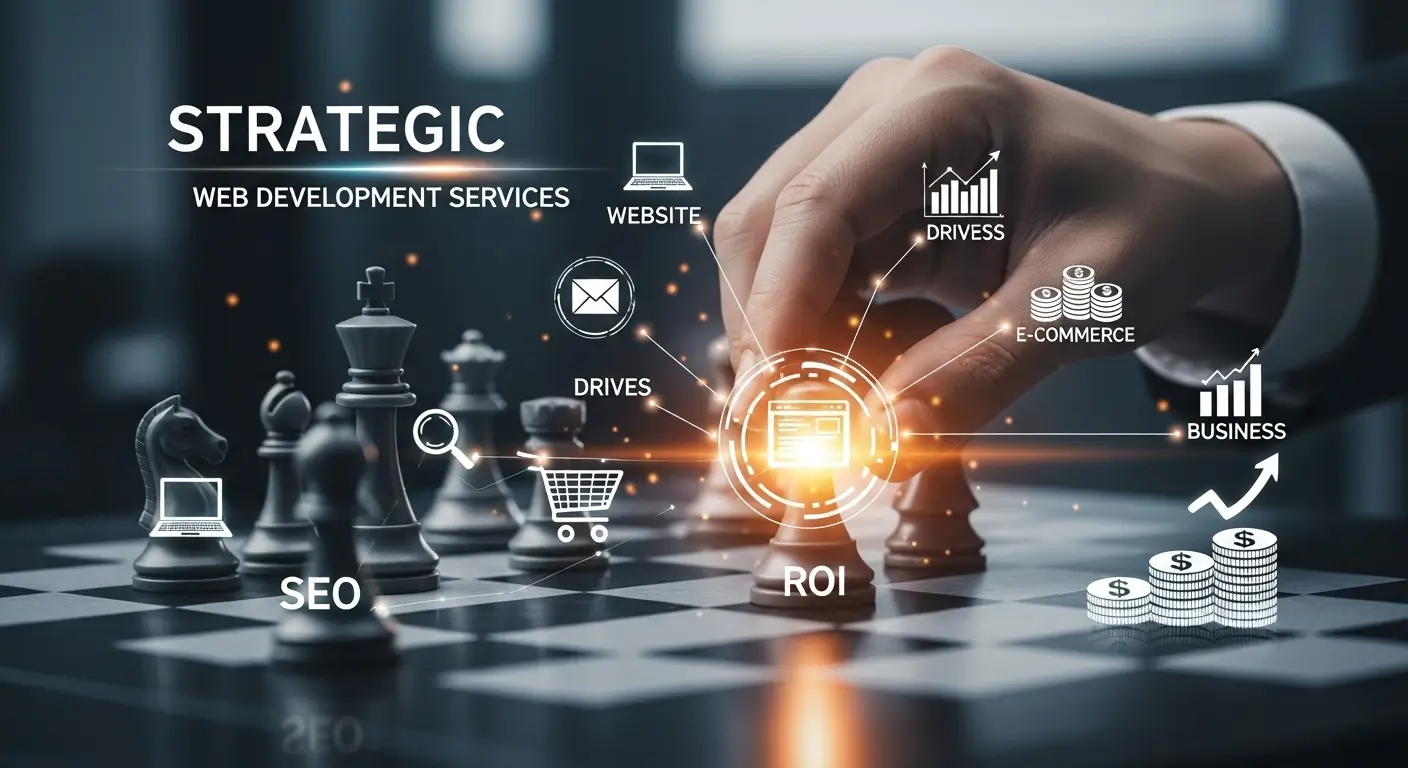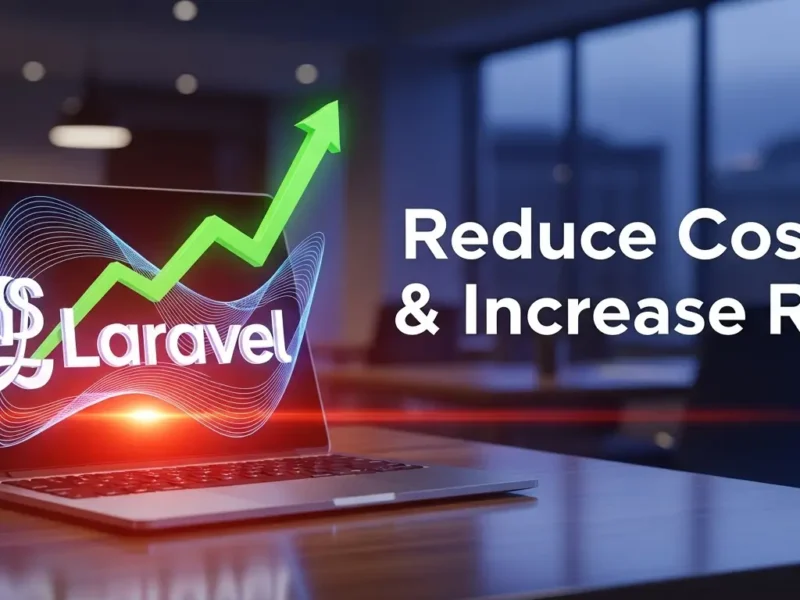In today’s hyper-digital landscape, every business knows it needs a website. But for many, a website remains a mere digital brochure – a static online presence that consumes resources without clearly demonstrating its value. If you’re a business leader or marketing manager grappling with the question, “Is our website truly working for us?” or “How can our online presence contribute directly to our bottom line?”, you’re not alone. The answer lies not in simplyhavinga website, but in possessing astrategicone.
A strategic website is far more than an online placeholder; it’s a meticulously engineered digital asset designed with specific business objectives in mind. It’s an investment, not an expense, crafted to deliver measurable, tangible Return on Investment (ROI) by attracting the right audience, nurturing leads, driving conversions, and ultimately, fueling your business growth. This article will delve into how a truly strategic website transforms from a cost center into a powerful revenue engine, providing concrete benefits that you can see and measure.
What Makes a Website “Strategic”?
The fundamental difference between an ordinary website and a strategic one is purpose. An ordinary website exists; a strategic websiteperforms. It’s built upon a foundation of clear business goals, deep audience understanding, and a commitment to continuous optimization. The expertise behind effective web development services is crucial in transforming a simple idea into a high-performing digital asset.
Here’s what elevates a website to strategic status:
- Goal-Oriented Design: Every page, every element, every call-to-action (CTA) is designed to guide users towards a predefined objective, whether it’s filling out a lead form, making a purchase, downloading a resource, or signing up for a newsletter.
- User-Centric Experience (UX): It’s built for your ideal customer. Navigation is intuitive, content is relevant and easy to consume, and the overall experience is seamless across all devices. A positive user experience encourages longer visits, more engagement, and higher conversion rates.
- Conversion Optimization Focus: From the initial design phase, a strategic website prioritizes converting visitors into leads or customers. This involves strategic placement of CTAs, compelling copywriting, streamlined forms, and a clear value proposition.
- SEO & Technical Excellence: It’s built with search engines in mind, ensuring it’s discoverable by your target audience. This includes clean code, fast loading times, mobile responsiveness, and a robust keyword strategy that allows search engines to understand and rank your content effectively.
- Integrated Marketing Hub: A strategic website isn’t an isolated island; it’s the central hub of your digital marketing efforts. It seamlessly integrates with your CRM, email marketing, social media, and analytics tools, creating a unified ecosystem for lead nurturing and customer management.
- Data-Driven Evolution: It’s never “done.” A strategic website is continuously analyzed using robust analytics, with insights used to refine its performance, improve user experience, and enhance its ability to achieve business goals.
How a Strategic Website Generates Revenue
Understandingwhata strategic website is, the next logical step is to explorehowit directly contributes to your business’s ROI. The benefits extend far beyond mere online presence, touching every aspect of your financial health.
1. Accelerated Lead Generation & Qualification
Perhaps the most direct path to ROI for many businesses, especially B2B, is through effective lead generation. A strategic website is a powerful lead magnet, designed to attract, capture, and qualify potential customers:
- Targeted Traffic: Through SEO and content marketing, the website attracts visitors actively searching for your products or services, ensuring higher quality leads from the outset.
- Compelling Lead Magnets: Offers like e-books, whitepapers, webinars, or free consultations encourage visitors to exchange their contact information.
- Optimized Forms & CTAs: Strategically placed, easy-to-complete forms and clear, persuasive calls-to-action guide visitors effortlessly into your sales funnel.
- Lead Nurturing Automation: Integrated with CRM systems, the website can automatically segment leads and trigger personalized follow-up sequences, reducing the burden on your sales team and improving conversion rates over time. This efficiency translates directly into lower customer acquisition costs.
2. Direct Sales & E-commerce Revenue
For businesses with products or services that can be sold directly online, a strategic website is your primary storefront, open 24/7/365:
- Seamless Shopping Experience: Intuitive product categorization, high-quality images, detailed descriptions, and secure, frictionless checkout processes reduce cart abandonment and boost conversions.
- Personalization: Leveraging user data to recommend relevant products or offer personalized promotions can significantly increase average order value and repeat purchases.
- Robust Payment Gateways: Offering multiple secure payment options builds trust and caters to diverse customer preferences.
- Inventory & Order Management: Integration with backend systems ensures accurate inventory, smooth order processing, and efficient fulfillment, leading to satisfied customers and reduced operational overhead.
3. Significant Cost Reduction
ROI isn’t just about revenue generation; it’s also about cost savings. A strategic website can dramatically reduce operational expenditures:
- Automated Customer Service: Comprehensive FAQ sections, knowledge bases, and AI-powered chatbots can answer common customer queries, freeing up your support staff to handle more complex issues. This lowers customer service costs and improves response times.
- Reduced Marketing Spend: By attracting organic traffic through strong SEO and effectively converting leads on-site, you can decrease reliance on costly paid advertising campaigns over the long term. Organic traffic is inherently more cost-effective.
- Efficient Information Dissemination: Easily update product information, company news, and service details on your website, eliminating the need for expensive printed materials or repetitive outreach efforts.
4. Enhanced Brand Authority & Trust
In the digital age, your website is often the first impression a potential customer has of your brand. A strategic website builds credibility and fosters trust:
- Professionalism & Design: A polished, modern, and user-friendly design immediately signals professionalism and attention to detail, setting you apart from competitors.
- Valuable Content: High-quality blog posts, articles, case studies, and testimonials position your business as an industry expert and a reliable source of information. This thought leadership builds trust and establishes your brand as an authority.
- Social Proof Integration: Displaying customer reviews, testimonials, trust badges, and social media feeds reinforces credibility and encourages new customers to engage. People trust what others say about you more than what you say about yourself.
5. Improved Customer Lifetime Value (CLTV)
A strategic website isn’t just about acquiring new customers; it’s also about nurturing existing ones and fostering loyalty, leading to a higher Customer Lifetime Value:
- Personalized Content & Offers: Tailoring content, recommendations, and special offers based on past purchases or browsing behavior keeps existing customers engaged and encourages repeat business.
- Self-Service Portals: Providing dedicated customer portals for account management, order history, and support queries enhances the post-purchase experience and reduces friction.
- Community Building: Integrating forums, comment sections, or social feeds can foster a sense of community around your brand, increasing engagement and loyalty.
- Feedback Mechanisms: Easily accessible survey forms or feedback widgets allow customers to share their experiences, helping you continuously improve services and products, which in turn leads to greater satisfaction and retention.
6. Actionable Data & Insights for Business Growth
One of the most powerful, yet often overlooked, aspects of a strategic website is its ability to provide invaluable data. Every click, every visit, every conversion generates data that can be analyzed to inform crucial business decisions:
- Understanding User Behavior: Analytics tools reveal how users navigate your site, what content they engage with, where they drop off, and what drives their decisions.
- Identifying Opportunities: Pinpointing popular products, successful content types, or high-converting pages helps you replicate success and allocate resources effectively.
- Optimizing Marketing Campaigns: By tracking traffic sources and conversion paths, you can determine which marketing channels are most effective and optimize your ad spend for maximum ROI.
- Informing Product/Service Development: Feedback and engagement data can highlight customer needs and preferences, guiding the development of new offerings.
Key Elements of a High-ROI Website
To achieve the benefits outlined above, a strategic website must incorporate several critical elements:
- Exceptional User Experience (UX) & User Interface (UI): Intuitive navigation, clear site structure, compelling visuals, and ease of use are paramount.
- Robust Search Engine Optimization (SEO): On-page optimization, technical SEO, quality content, and a strong backlink profile ensure discoverability.
- Conversion Rate Optimization (CRO): A continuous process of testing and refining elements (CTAs, forms, landing pages) to maximize conversions.
- Mobile Responsiveness: Essential for reaching a vast audience, as a significant portion of web traffic now originates from mobile devices.
- Compelling, Value-Driven Content: High-quality blog posts, product descriptions, videos, and case studies that resonate with your target audience.
- Clear Calls-to-Action (CTAs): Guiding visitors to the next step, whether it’s “Buy Now,” “Download,” or “Get a Free Quote.”
- Integrated Analytics & Tracking: Tools like Google Analytics, heatmaps, and CRM integrations to monitor performance and gather insights.
- Scalable Architecture: Built on a flexible platform that can grow with your business and adapt to future needs.
Measuring Your Website’s ROI: What to Track
To prove your website’s tangible ROI, you need to measure it. Key Performance Indicators (KPIs) will vary depending on your business goals, but common metrics include:
- Conversion Rate: The percentage of visitors who complete a desired action (e.g., lead form submission, purchase).
- Lead-to-Customer Conversion Rate: How many leads generated through your website turn into paying customers.
- Customer Acquisition Cost (CAC): The total cost of marketing and sales efforts divided by the number of new customers acquired. A strategic website aims to lower this.
- Return on Ad Spend (ROAS): For paid traffic, how much revenue is generated for every dollar spent on ads that drive traffic to your site.
- Website Traffic: Unique visitors, page views, and traffic sources (organic, direct, referral, paid).
- Engagement Metrics: Bounce rate, average session duration, pages per session – indicating how engaged visitors are.
- Customer Lifetime Value (CLTV): The total revenue a business can expect to generate from a single customer account over their relationship with the company.
- Support Cost Reduction: Track the reduction in customer service calls or email inquiries due to self-service options on your website.
Basic ROI Formula: (Gain from Investment – Cost of Investment) / Cost of Investment
For a website, “Gain from Investment” could be the revenue generated from website-driven sales or the monetary value of leads, offset by cost savings.
Common Pitfalls to Avoid
Even with the best intentions, businesses can fall short of realizing their website’s full ROI potential by making common mistakes:
- Treating it as a One-Time Project: A strategic website requires ongoing maintenance, content updates, and performance optimization.
- Ignoring Mobile Users: A non-responsive website immediately alienates a huge segment of your audience.
- Lack of Clear Goals: Without defined objectives, it’s impossible to measure success or strategize effectively.
- “Set It and Forget It” Mentality: Websites aren’t static; they need continuous monitoring and adjustment based on data.
- No Analytics Setup: If you’re not tracking performance, you have no idea what’s working and what isn’t.
Conclusion
A website built with strategy at its core is no longer just a digital brochure; it’s a dynamic, measurable business asset that drives tangible ROI. It’s your most powerful tool for lead generation, sales acceleration, cost reduction, brand building, and deep customer insight. Investing in a strategic website isn’t an option in today’s competitive landscape – it’s a necessity for sustainable growth.
By focusing on user experience, SEO, conversion optimization, and continuous data analysis, your website can transform from an overlooked expense into a high-performing engine that consistently attracts, engages, and converts your ideal customers. It’s time to stop seeing your website as a digital placeholder and start viewing it as the proactive, revenue-generating machine it’s designed to be.



